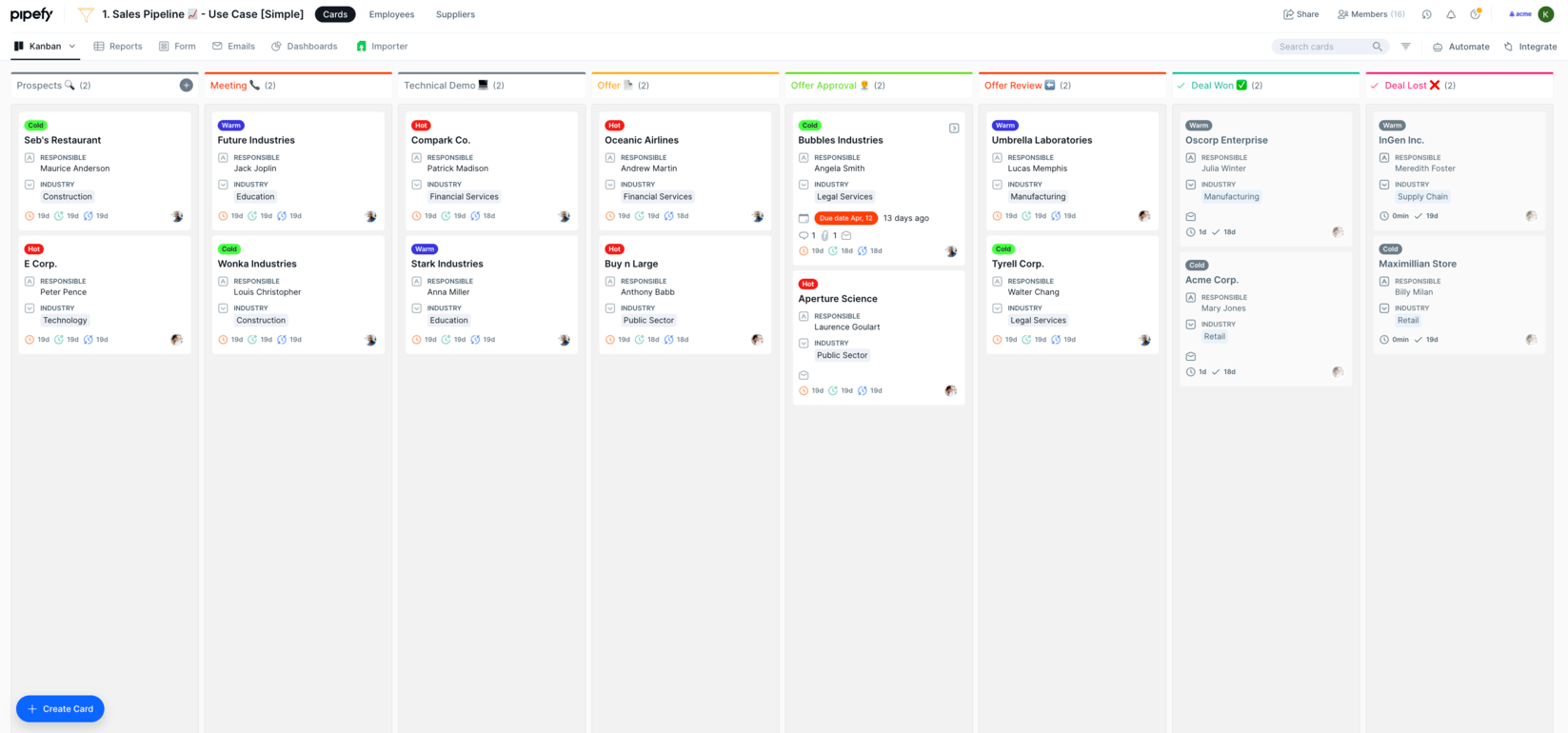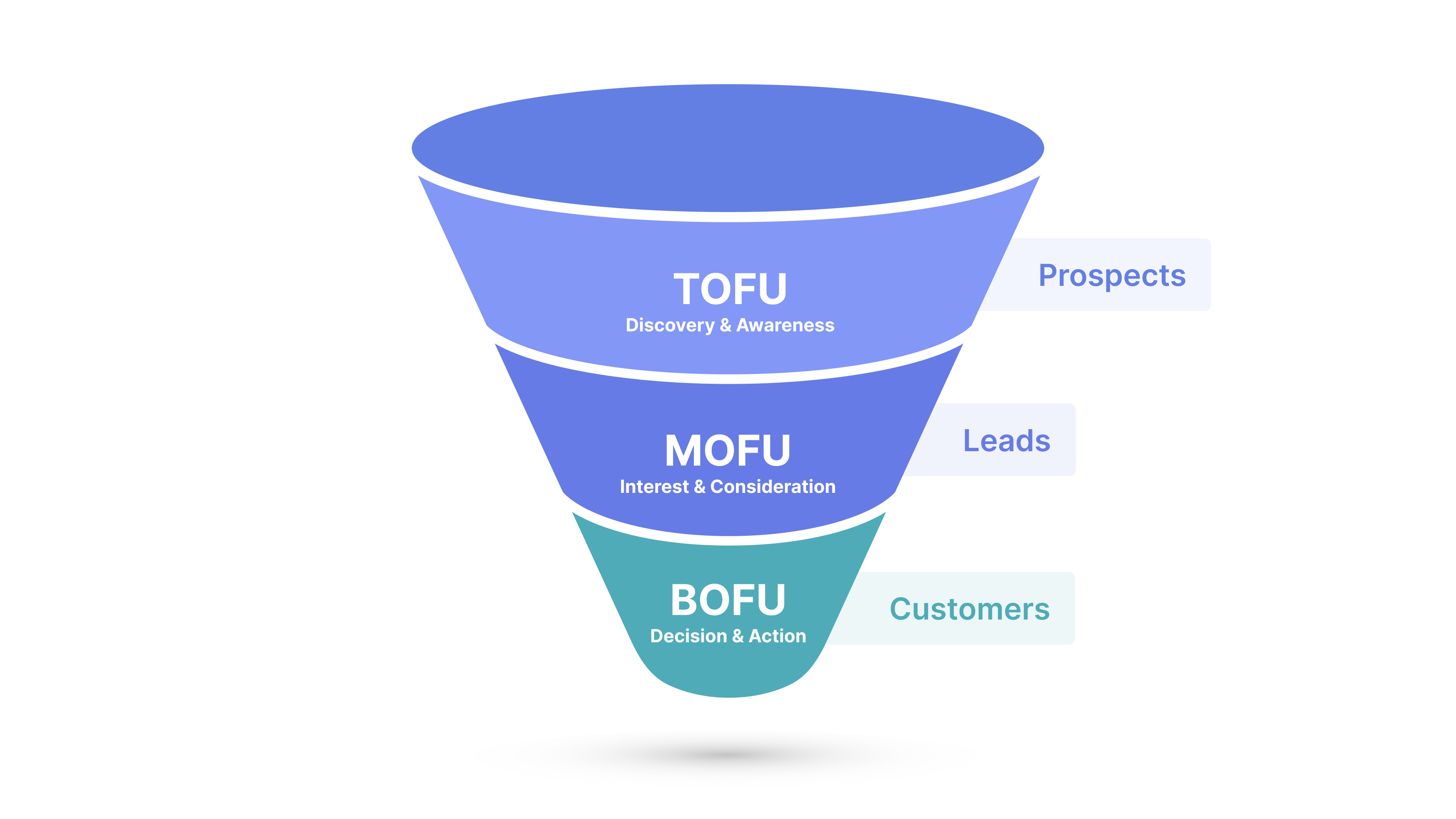ARTICLE SUMMARY
Keeping it simple, sales pipeline management is nothing more than estimating incoming cash flow or, how much you'll make from your sales opportunities.

One of the most significant signs of an organized business is having a structured sales pipeline that is clear, organized, and standardized. Find out more about sales pipeline stages, the benefits of a structured sales process, and how to improve your sales pipeline with a sales CRM solution.
Definitive Guide to Workflow ManagementDownload now
What is a sales pipeline?
A sales pipeline serves as a visual way to organize the various stages of a sales cycle and to see where potential customers are throughout the sales process, from start (prospect or qualified lead) to finish (deal closed). It also includes every step that sales reps need to take to move potential buyers down the pipeline, such as follow-ups, demos, and negotiations.
In addition to serving as a visual guide, a sales pipeline is also a way for sales teams to assess sales strategies and sales process steps to increase their sales conversion rate.

Sales funnel vs. sales pipeline
A sales funnel, also known as a purchase funnel, is a visual representation of the customer’s buying journey. Typically, the sales funnel is broken down into three levels — top of funnel (TOFU), middle of funnel (MOFU), and bottom of funnel (BOFU). Within each level, potential customers are targeted with information or actions that address the various stages within each funnel level, such as awareness, discovery, interest, consideration, decision, and action — in order to reach the ultimate goal: a purchase.

Potential customers enter the sales funnel from the top and slowly trickle down through each funnel level. Unlike the sales pipeline, which is primarily owned by the sales department, the sales funnel informs any sales enablement collateral owned by the marketing department. And in order for the sales collateral to be useful and informative for potential customers, it’s essential for sales and marketing departments to work together.
To reach the final phase, the sales funnel will also include sales enablement assets such as:
| TOFU | MOFU | BOFU |
|---|---|---|
| Social media posts | Webinars or events | Demos |
| Blogs, microsites, or newsletters | Downloadable gated assets | Customer case studies |
| Research, podcasts, or promotional videos | Informative meetings or demos with sales reps | Webinars or events |
The key difference between a sales funnel and a sales pipeline is that:
- A sales funnel shows the buyer’s journey through the eyes of a potential customer. It is used to understand how customers navigate their way through the journey and ultimately reach the decision to purchase. The journey visualization is from top to bottom.
- A sales pipeline shows the same journey through the eyes of a sales rep. It serves as a way to show where customers are in the buying process and what actions sales reps can take to move them further along. The journey visualization is from left to right.
How to analyze and evaluate a sales pipeline
The first step in building a structured sales pipeline is to assess the current health of your sales pipeline. Here are some tips to get you started.
Review pipeline stages
A pipeline helps sales teams visualize where leads are in the sales process. This is especially helpful for teams managing a large volume of leads. A pipeline is also a way to see how leads move through the pipeline, which is a great way to assess their behavior and verify whether it lines up with the expected behavior that is mapped in the sales process.
Start by looking at the various pipeline stages to determine whether the flow is conducive to high conversion rates and whether each step is providing value to potential customers. This review is a chance to align the sales process with the buyer journey. It’s also a chance to see whether there are any redundancies or gaps that may be negatively affecting lead experiences and preventing sales teams from closing deals.
Learn more about the sales pipeline stages.
Draw insights from sales metrics and KPIs
In addition to reviewing pipeline stages and looking for high-level improvements, drawing data-driven insights can help you make more strategic decisions and implement the best improvement for your pipeline. Here are some metrics to review and questions to ask:
Lead source
Where are leads coming from? Is the lead source aligned with your sales strategy?
If the lead source isn’t aligned with expectations, then there may be an issue with messaging, targeting, campaigns, or sales enablement.
Industry
What industry or industries are leads commonly associated with?
If there’s an influx of leads coming from an industry that you are not actively targeting, this may be an opportunity to shift focus, assess messaging, and improve sales team training to better target the industry. It’s also a chance to refine messaging to better target the intended industry audience.
Deal size
What is the average deal size? How does this inform conversions?
This data is a useful measurement for sales forecasting and is a granular view at qualities or trends that are associated with leads that are most likely to become customers. Measuring these profitable deals allows sales teams to develop strategies or propositions for new and existing customers.
Conversion rate
How often do leads become customers? What drives this decision?
It’s essential to understand what drives conversions and what doesn’t. For example, if the conversion rate is low for one month and the common trend is that follow-ups are delayed, this is an opportunity to implement automated follow-ups because there is evidence highlighting the issue and supporting the solution. And if conversion rates are higher than usual, look at the data to identify what’s leading to higher conversions and replicate this to increase the positive results.
Sales cycle length
How long does it take for sales reps to close deals?
Look at how long it takes leads to run through the pipeline and for sales reps to close deals. Identify which deals were delayed or rushed, whether that impacted the ultimate result, and whether sales reps are providing the right amount of engagement across the pipeline.
Sales pipeline value (overall and per stage)
What is the average pipeline value generated by leads? Are sales reps engaging investing time adequately with leads that are likely to buy? Are sales efforts leading to conversions?
Pipeline value is a metric that measures expected deal value and conversion probability. It informs how effective sales efforts are and whether sales reps are investing the appropriate amount of time with leads that provide the most value.
Sales rep performance
Are sales reps trained appropriately? Do they have all the information, tools, or resources they need to successfully inform leads?
While this doesn’t directly relate to reviewing pipeline stages or performance, sales reps do have an impact on the pipeline. Because they are the main points of contact for leads, it’s critical that they are successfully trained and informed on product/service benefits and how to present that to leads.
5 benefits of a structured sales pipeline
A sales pipeline is only as effective as the way it is structured. An unstructured pipeline can make it difficult to track where potential customers are and how to best engage with them. It not only creates confusion, but it can negatively affect the chances of a closed deal. It can also make tracking metrics and process improvements difficult. Here are five benefits of a structured sales pipeline.
1. Gathers leads in one place
Visibility is the greatest benefit of a structured pipeline. With the status of prospects and qualified leads in a centralized place, sales reps can easily see where potential customers are in the buying journey and what they can do to help nurture or resolve any questions, concerns, or needs.
Centralizing lead information makes it possible to visualize details and updates in one place and is more efficient than switching between various tools, like email, chat apps, or Excel sheets.
2. Tracks pipeline performance and improvement opportunities
In addition to gaining visibility into where prospects are in the sales process, a structured sales pipeline also makes it easy to track and measure key performance indicators like deals closed vs. deals lost, sales cycle duration, average deal value, and more.
With trackability and visibility combined, it’s also easier to identify ways to improve the buyer’s journey and apply those improvements to your sales pipeline. Plus, pipeline data enables teams to start building a more strategic operation by forecasting conversions, comparing results, checking each vendor’s performance, and spotting bottlenecks.
3. Standardizes sales process for consistent experiences and execution
A structured pipeline makes it easier to track sales process inefficiencies. It also provides sales reps and potential customers with a streamlined and repeatable experience every time, which in turn creates better and more consistent experiences, boosts efficiency, and improves conversion rates.
4. Increases conversions and productivity
With visibility into pipeline performance and customer experiences, sales teams are able to improve on what’s working to increase conversions and resolve any potential issues that may be negatively impacting conversion rates, such as delayed follow-ups or missing lead trackability.
The sales team spends less time chasing information and has more time to dedicate to leads, growing conversion rates, finding opportunities to improve pipeline performance, and staying on track to meet sales goals.
What are the stages of a sales pipeline?
The process begins with the user identifying a problem (or several) and searching for a solution. When a buyer comes to the conclusion that the service or product is the solution they are looking for, they will enter the pipeline as prospects.
While this may vary from team to team, the stages of a sales pipeline can typically be summed up as:
- Prospects. This includes all potential customers that have shown interest in your product or service. At this stage, there are no signs of whether prospects are prepared to make a purchase or are just interested in additional information.
- Qualified leads. Once prospects have been vetted and qualified as either ready or highly likely to make a purchase. If they are not, a nurture campaign may be deployed to get potential customers to this stage.
- Sales presentation or demo. Once sales reps have met with qualified leads and gained a better understanding of their pain points, requests, or needs, the sales team will host a demo or sales presentation on product features or service details, potential costs, and additional benefits that may influence the lead’s decision. There may be cases where an additional demo or presentation is required if the lead has additional questions or requirements.
- Proposal. If the lead remains interested, the sales team will draft and share a proposal for them to consider. This usually includes total cost, next steps, a contract, and whatever else the leads need to review before making a decision.
- Negotiation. As the name implies, leads will have a chance to counter the sales team’s proposal. Leads and sales teams will work together to negotiate terms and conditions that work for both parties.
- Decision (deal won or deal lost). At this stage, a decision is made. If a lead becomes a customer, they will be sent into new customer onboarding. If a lead decides to pass on the negotiated terms, leads can either be funneled back to the prospective or qualified lead stage for additional lead nurturing or be archived. This will vary depending on your sales team’s pipeline structure.
- Post-sales & handoff. It’s recommended that sales teams follow up with all leads once they’ve reached the end of the sales pipeline — whether they became a customer or not. This feedback is essential to improving the sales process. Once final steps are taken, leads will now be new customers and they will begin working with the customer success team.
For a truly customer-centric sales process, sales reps will understand the customer’s needs and present the best way of addressing that problem with their product or service as the solution at every stage of the pipeline.
Learn more about sales pipeline stages and pipeline management best practices for ideas on how to best structure yours.
How to improve how you manage your sales pipeline
Continuous improvement is necessary to provide excellent buyer experiences. In addition to assessing your pipeline, consider these tips for better pipeline management.
Map your prospective buyers and sales funnel and stages
If you haven’t already, documenting this information is key to understanding and ensuring that your pipeline is being managed effectively.
Define sales cycle length
Each deal will be different and that will also influence how long it takes to close deals. However, to ensure that sales reps are using their time effectively, defining sales cycle length sets a standard for closing deals and helps bring consistency to the sales process.
Remove stagnant deals
In a perfect world, all leads will eventually become customers in a timely manner — but that’s not always the case. Some may take longer than anticipated which can have negative results on productivity and management.
One way of preventing your pipeline from becoming clogged with stagnant leads is deciding to cut the deal after a certain amount of time spent in a phase. For example, if a deal has spent a month in the negotiation stage, that is an opportunity to assess the likelihood of the deal being closed.
In some cases, a lead may not be able to commit due to budget constraints. In cases like this, consider moving them back into the prospecting phase and checking in occasionally (whether that’s every month or every three months) to nurture interest and show them that you’re also still interested.
Keep it up to date and track results
Your sales pipeline needs to continuously evolve to meet customer needs, market changes, and business goals. This means updating your pipeline and tracking pipeline performance regularly to keep up with improvements that need to be made and bottlenecks that need to be resolved.
Leverage sales CRM software
CRM, or customer relationship management, is technologies, processes, and strategies focused on a brand’s relationship with its clients. A sales CRM software solution applies that same approach and focuses on vendor-customer relationships by streamlining and connecting your sales processes with other departments and integrating existing sales systems.
Sales CRM software centralizes your customer and pipeline records in one place, eliminating time-consuming tasks that can introduce errors, like manually transferring information. It also makes it easy to create approval flows, automate steps in the sales process in just a few clicks, and collect reliable pipeline data to spot improvement opportunities and continually streamline your sales process.
Learn more about sales management strategies.
Manage your sales pipeline with Pipefy
With Pipefy, say goodbye to managing fragile spreadsheets, siloed communication, manual and error-prone updates, or complex systems.
Pipefy’s low-code automation software combines the benefits of sales process management and customer relationship management to enhance your team’s focus and productivity and your pipeline’s value and conversion rate. Scale your sales process easily to gain more visibility into your pipeline and automate tasks to finally focus on what really matters: building relationships with your customers.










